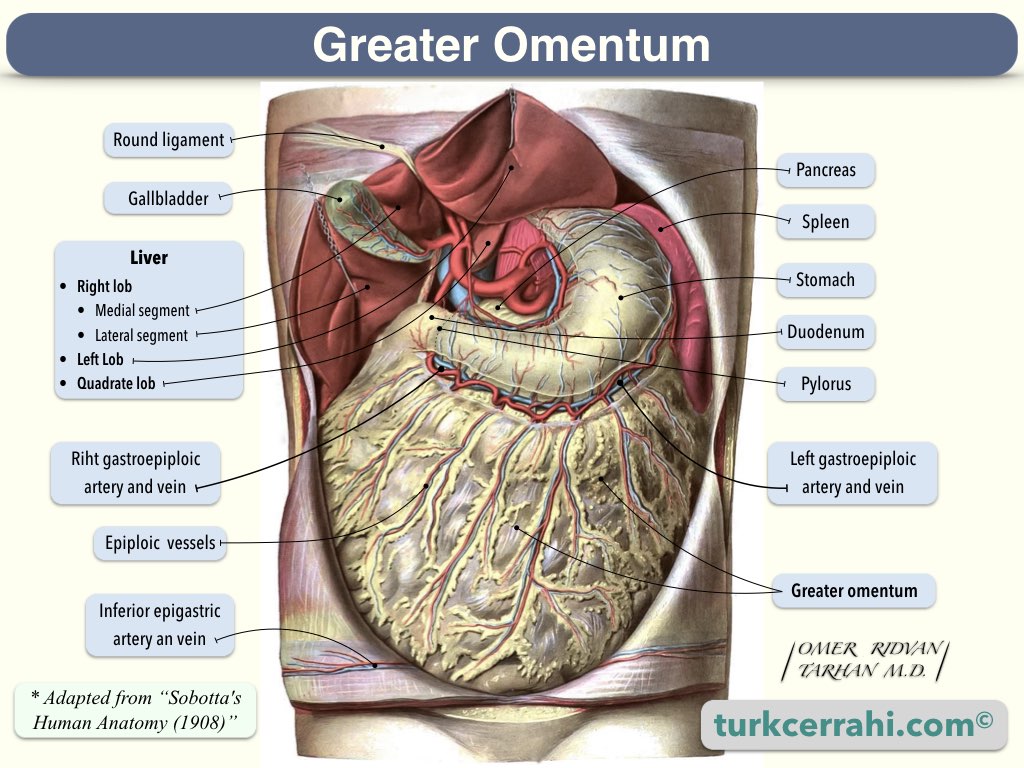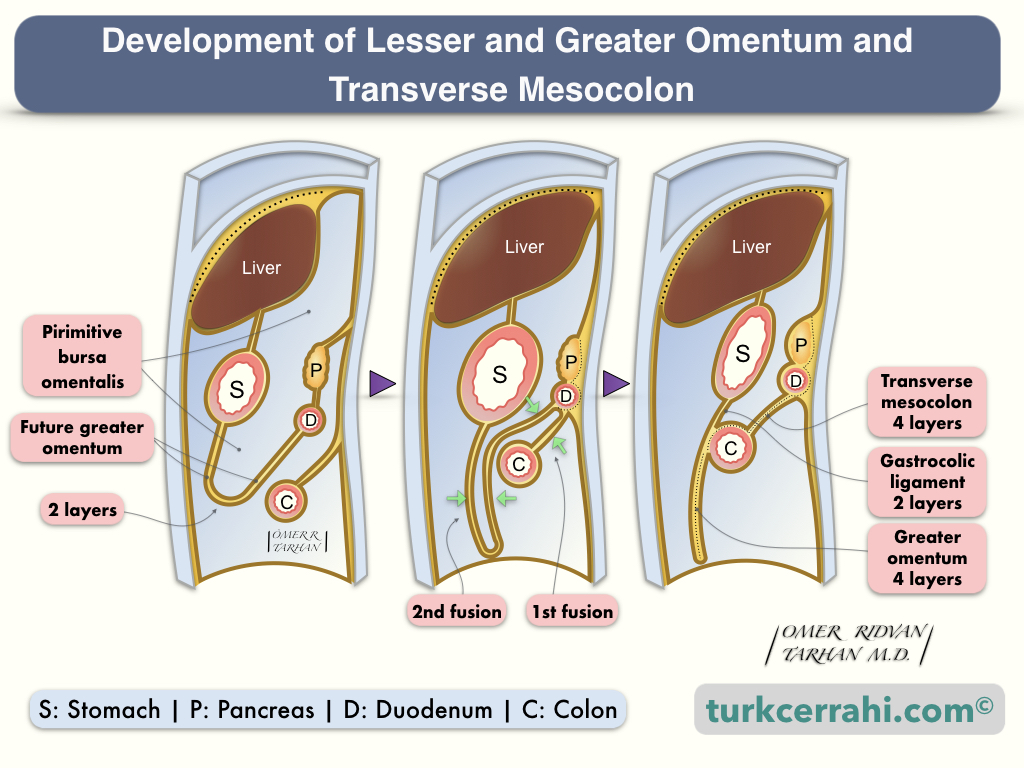The Greater Omentum
The greater omentum, also known as the omentum majus or epiploon, is a four-layered peritoneal membrane that extends from the greater curvature of the stomach and covers the entire intestines like an apron.
Two layers emerge from the stomach’s front and back, and two layers emerge from the transverse colon’s front and back. The part between the stomach and the transverse colon is called the gastrocolic ligament. When this ligament is opened, the stomach’s posterior can be reached.


The greater omentum is the first structure encountered when the abdomen is opened. It adheres to the site of inflammation in the abdomen and attempts to limit the process (e.g., an appendiceal abscess).
The greater omentum is a mobile structure that easily adheres to areas of trauma, peritonitis, or ischemia. It plays an important role in the peritoneal defense mechanism. For example, it can prevent the spread of infection to the entire abdomen (generalized peritonitis) by surrounding the area around perforated organs and limiting the perforation as an abscess. It is rich in adipose (fat) tissue and keeps the intestines warm.
The greater omentum develops from the dorsal mesentery (dorsal mesogastrium) during embryonic development.
The peritoneal ligaments that develop from the greater omentum are as follows
The greater omentum is generally defined to include the following four ligaments.
- Gastrophrenic ligament – extends from the greater curvature of the stomach, near the junction of the body and fundus, to the central tendon of the diaphragm.
- Gastrocolic ligament – extends from the greater curvature of the stomach to the transverse colon
- Gastrosplenic ligament (or gastrolienal ligament) – extends from the greater curvature of the stomach to the hilum of the spleen, which is the area where the blood vessels, lymphatic vessels, and nerves enter and exit the spleen.
- Splenorenal ligament – (or lienorenal ligament)- extends from the hilum of the spleen to the left kidney.
Vascular Supply of the Greater Omentum
The blood supply to the greater omentum is provided by the right and left gastroepiploic arteries. Both arteries are branches of the celiac trunk and supply the entire greater omentum.
- Celiac artery > common hepatic artery > gastroduodenal artery > right gastroepiploic artery
- Celiac artery > splenic artery > left gastroepiploic artery
- The right and left gastroepiploic arteries anastomose with each other within the greater omentum along the greater curvature of the stomach. These two arteries are continuations of each other.